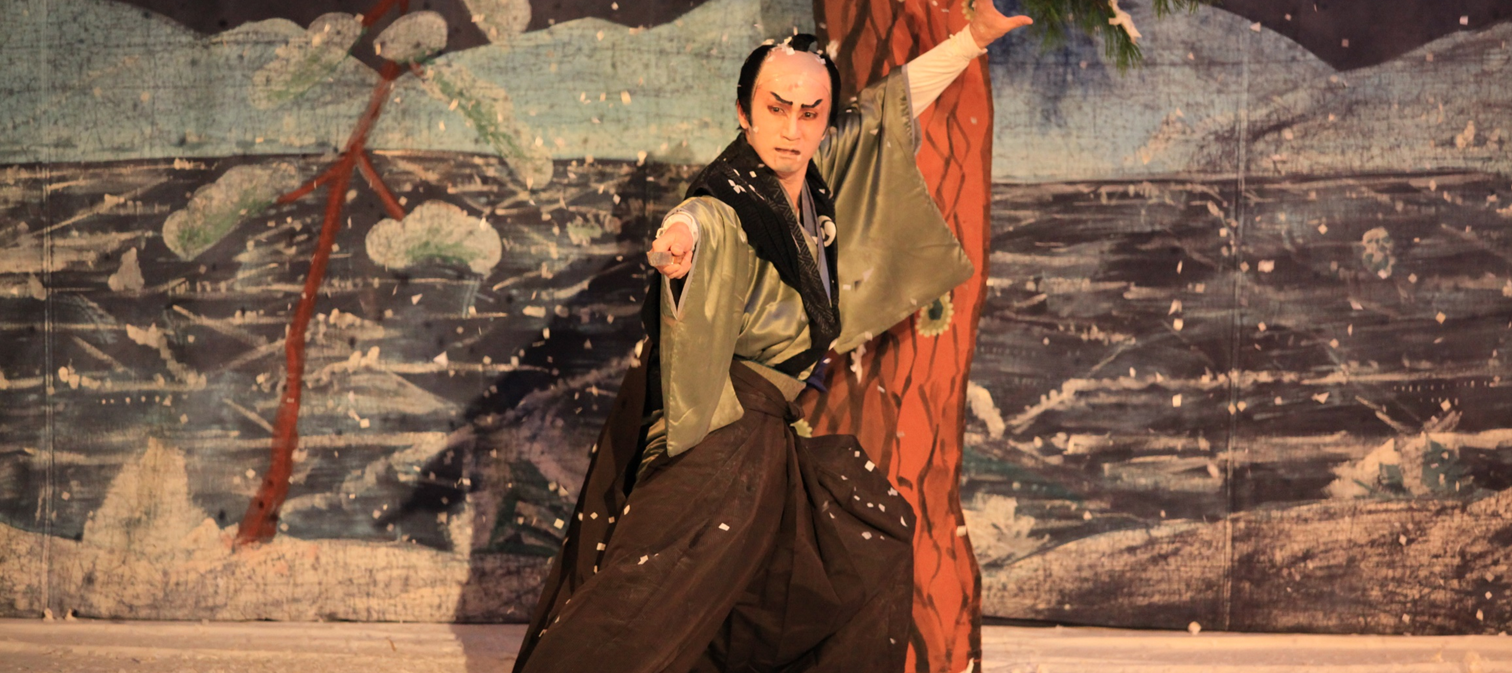Ji-kabuki
Kabuki Community Theater (Ji-Kabuki)
The phrase ji-kabuki literally means “local kabuki” and is performed by amateur actors in communities outside the formal kabuki theater circuit. The practice developed in conjunction with the rise of kabuki’s popularity.
The Spread of Local Kabuki
Kabuki is a traditional performing art that originated in populous areas during the seventeenth century. It is known for its colorful costumes, makeup, and dramatic performances, which combine acting, dancing, and music. It was often performed in Edo (now Tokyo), Osaka, and Kyoto. As its popularity spread during the Edo period (1603–1867), rural communities began inviting famous kabuki actors to perform for them as well. Inspired by these professional performances and their love of kabuki, many smaller communities launched their own theaters, and ji-kabuki was born. Rather than watch other people perform, the townspeople and farmers wanted to appear on stage themselves.
The Birth of Ji-kabuki
Ji-kabuki took root in the Tono region (the southeastern part of Gifu Prefecture), particularly in Nakatsugawa. Many ji-kabuki playhouses were built and flourished in the city. In fact, the popularity of ji-kabuki reached such a fever pitch that the Tokugawa government banned performances in some areas to stop it from distracting townspeople and farmers from their work.
Strong Community Spirit
Ji-kabuki is a way for communities to celebrate their culture and work together by taking on various roles to put on a show. These include actors, musicians, and stagehands. The performances help keep the traditions of kabuki alive and allow people from different backgrounds to participate in and enjoy this unique form of theater.
A key part of ji-kabuki is the interaction between the actors and spectators. Grateful patrons throw ohineri (coins wrapped in paper) and cheer on the actors, encouraging energetic performances. The shared nature of the experience creates a sense of unity for all parties involved.
Ji-kabuki Playhouses in Nakatsugawa
There are currently three playhouses in the area keeping this rare art form alive. One is the Kashimo Meijiza Theater. This theater-style playhouse built by volunteers in 1894 is in the small farming village of Kashimo. Visitors can go behind the scenes to learn the secrets behind ji-kabuki performances and explore the building, from the main hall to the basement, where the revolving stage is operated. The colorful back curtains of the theater were a founding gift from the women of the village and are dyed with their family names.
Currently there are only around 200 groups that continue to preserve ji-kabuki in Japan. Thirty of them can be found in Gifu Prefecture, making it the most active region for ji-kabuki in the country. In 1972, the Kashimo Meijiza Theater was designated an Important Tangible Folk Cultural Property of Gifu Prefecture.



この記事に関するお問い合わせ先
商工観光部観光課
電話番号:0573-66-1111(内線4272・4273)
メールによるお問い合わせ














更新日:2024年10月22日